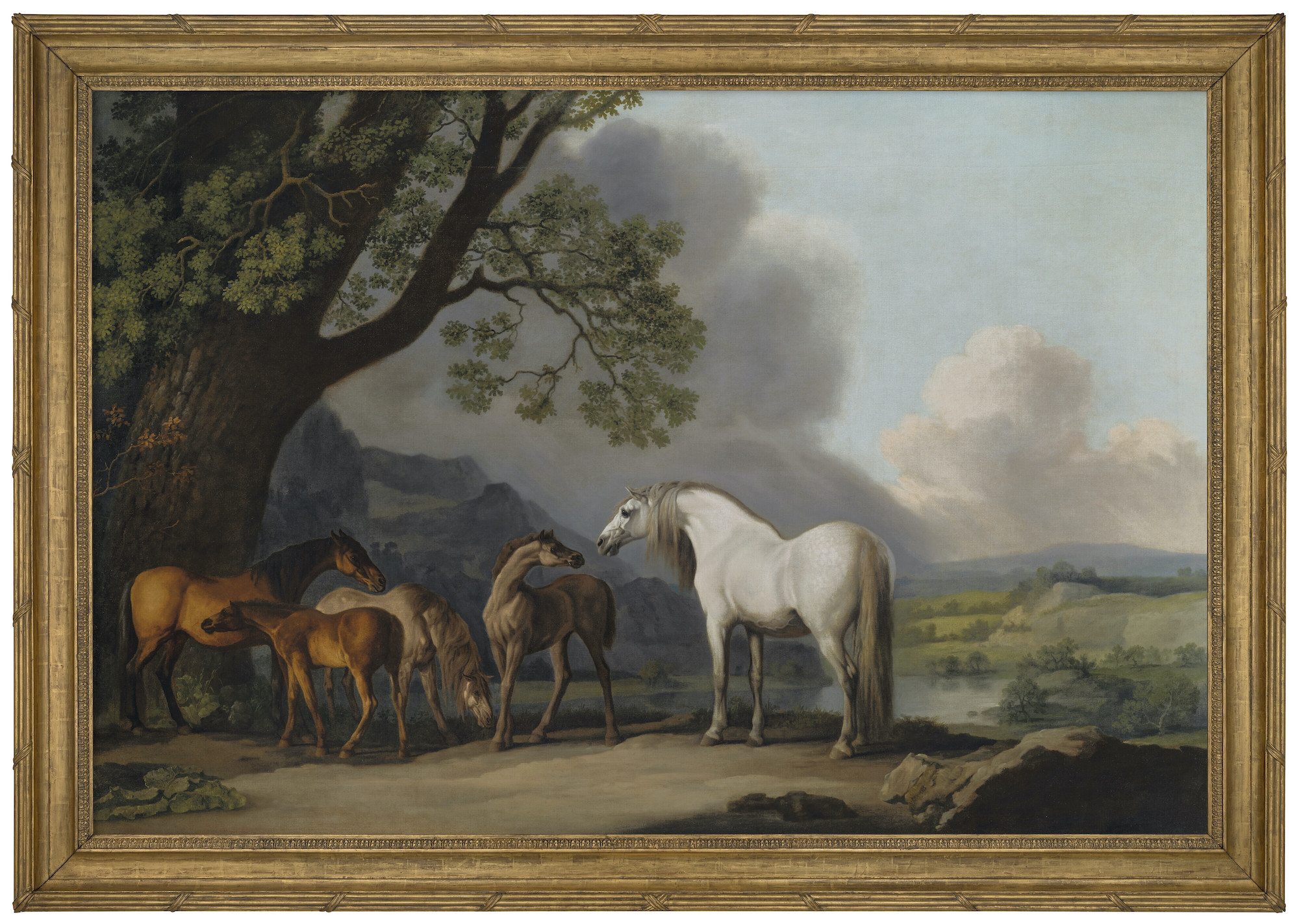#George #Stubbs #Mare #Foals #Christies #Antique #Collecting
One of the largest pictures that George Stubbs – the most revered animal painter in the history of European Art – executed, and one of the last two on this scale of any subject to remain in private hands, Mares and Foals will be a highlight of Christie’s Old Masters Part I sale on 2 July, during Classic Week in London this summer.
Estimated at £7,000,000-10,000,000 and dated to circa 1769, this monumental canvas is the artist’s grandest statement on the theme of Mares and Foals, the series of paintings executed in the 1760s which arguably stand as Stubbs’ crowning achievement.

The picture is believed to have been painted for the Prime Minister of Britain from 1768-1770, Augustus Fitzroy, 3rd Duke of Grafton (1735-1811), who was part of the closely-connected nexus of ‘Whig’ statesmen that provided Stubbs with his most important patronage during this career-defining period. Having only appeared at auction once before, almost 50 years ago, it will be on public view in New York from May 18 to 22, and in the pre-sale London exhibition which runs from June 28 to the morning of July 2.
John Stainton, Christie’s International Deputy Chairman, Old Master Paintings, commented: “George Stubbs’ genius for animal painting is nowhere more evident than in his series of Mares and Foals paintings. Steeped in scientific study, the artist created wholly original compositions which describe a bucolic idyll; seemingly informal yet conveying a sense of restrained grandeur. It is a great privilege to be offering this, Stubbs’ most ambitious work on the theme, in our summer sale.”
George Stubbs and his Patrons
George Stubbs arrived in London in 1758 or early 1759 and quickly came to the attention of Joshua Reynolds, the painter then emerging as the leading portraitist of his day. It was almost certainly through Reynolds that Stubbs was introduced to a circle of noblemen with a shared passion for horse racing, many of whom belonged to the recently founded Jockey Club and Brooks’, the London club so central to the formation of the Whig political party. Figures such as the Duke of Richmond, the Duke of Grafton and Lord Rockingham, in Stubbs’ words, ‘delight in horses, and who either breed or keep any considerable number of them’ (cited from the artist’s introduction to his The Anatomy of the Horse).
Augustus Henry Fitzroy, 3rd Duke of Grafton, who had sat for Reynolds in 1759 and for whom this picture is believed to have been painted, was one of the first of these young Whigs to order work from Stubbs. Frederick St. John, 2nd Viscount Bolingbroke commissioned the first of the artist’s Mares and Foals in circa 1761-2, a work showing six horses in what is presumably the park at Lydiard Tregoze, his house in Wiltshire. Bolingbroke’s canvas must have been seen and admired by others within this Whig circle and thus followed, over the course of the decade, the most celebrated series of equine pictures from the golden age of British painting.
Mares and Foals
This painting last appeared on the market in 1976, since when it has been part of an important private collection in Illinois, U.S.A. A beautifully crafted composition, the picture is imbued with a calm and lyrical quality which is a hallmark of Stubbs’ Mares and Foals series. The last of his grand-scale equine set pieces, he masterfully brings a heightened nobility to his subjects in this work by presenting them on a more imposing scale than he had used previously. This is exemplified by the large grey Arabian mare on the far right of the group, theatrically lit against the brooding sky.
The 1760s bore witness to the full range and originality of Stubbs’ work. It was during these years that Stubbs painted his sublime Whistlejacket for Lord Rockingham (circa 1762, London, National Gallery) and Gimcrack on Newmarket Heath, another outstanding masterpiece from the period, painted for Lord Bolingbroke in circa 1765, which set a world auction record for the artist when it sold at Christie’s in 2011 for £22.4 million.
The masterful naturalism which Stubbs achieved over the course of his career laid the foundations for artists who excelled in animal painting of subsequent generations such as Gericault and Degas.
Stubbs Early Years
Born in Liverpool in 1724, Stubbs would have immediately come into contact with animals through his father’s trade as a currier and leather seller. He drew from an early age, and by the early 1740s was painting professionally, his principal subject-matter at the time being portraits. He was in York from 1745-1753, before visiting Rome briefly in 1754. After two years back in Liverpool, he settled in Lincolnshire where he worked on his ground-breaking Anatomy of the Horse project, ahead of moving to London at the end of the 1750s.





